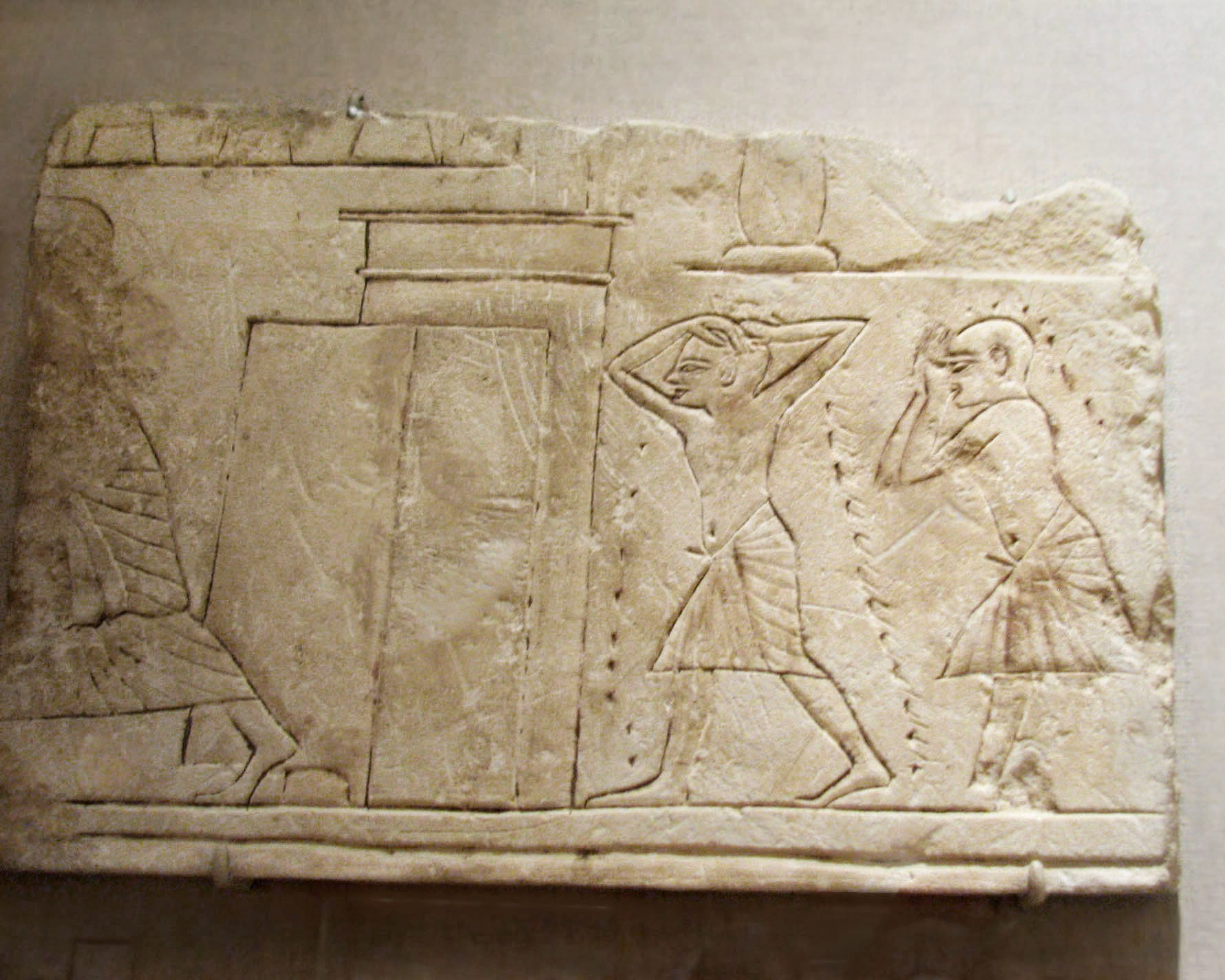(From museum website):
"The controversial reign of the 'heretic' king Akhenaten, known as the Amarna Period, was a time of great experimentation, particularly in the visual arts. Traditional features found in relief, such as register lines and the number of figures included in a scene, were modified to allow freer use of the compositional space.
"This relief fragment shows two men on the right who, by their gestures, can be identified as mourners. The small cuts in the stone surface above and in front of the figures quite likely represent the dust that mourning Egyptians are known to have poured on their heads as a sign of bereavement. To the left can be seen the traces of a man in official dress who appears to be hurrying from the opened door of the tomb. The scene speaks strongly of disorganization and chaos, conveying quite clearly the distress that the ancient Egyptians felt in the presence of death."
If this has been influenced by Akhenaten in stylistic manner, perhaps it has been influenced by him in other ways:
"I refer to two religious ideas absolutely crucial for the Egyptians and conspicious by their complete absence from Akheneten's hymn, having fallen foul of Amarna's censorship: (regenerative) immortality and justice." _The Mind of Egypt_, by Jan Assmann, page 221
Perhaps people had become cynical because of a plague during Akhenaten's father's reign. Arielle P. Kozloff raises the question:
"The eight-year gap in an otherwise verbose royal record, the new cults, marriages and art styles, the changes in habitation and in burial practices in the reign of Amenhotep III are uncharacteristic of a culture and king that loved stability and tradition above all else. They are typical of a reaction to a plague." _Bubonic Plague During the Reign of Amenhotep III?_, KMT Journal, Volume 12, No. 3 (Fall 2006), page 46
He commissioned more than 700 huge statues of Sekhmet, a goddess whose roles include protection from plague. Such a huge number strongly suggests he hoped to gain her assistence. (The Brooklyn museum has one, while the Metropolitan museum has several more.) Kozloff gives other clues to this probable event.
While in Akhenaten's time, hope of immortality was given up, there is still more contrast. For previously, "Firm belief in immortality made it impossible to include songs
expressive of pain and sadness, songs that would have immortalized the
negative side of death and the realm of death. In the immediate wake of the
Amarna Period, however, this taboo was lifted, and the texts sound an entirely
new note expressive of pain and sadness. In them, we encounter the image of
death as reversal. Thus, from the reign of Aya (ca. 1320 B.C.E.), we have the
tomb of a man named Neferhotep (Theban Tomb 49). In it, his widow mourns:
Go away - how can you do that?
I walk alone, see, I am behind you!
O you who loved to chat with me,
you are silent, you do not speak!
The good shepherd is gone to the land of eternity...
_Death and Salvation in Ancient Egypt_, by Jan Assmann, David Lorton, page 114



